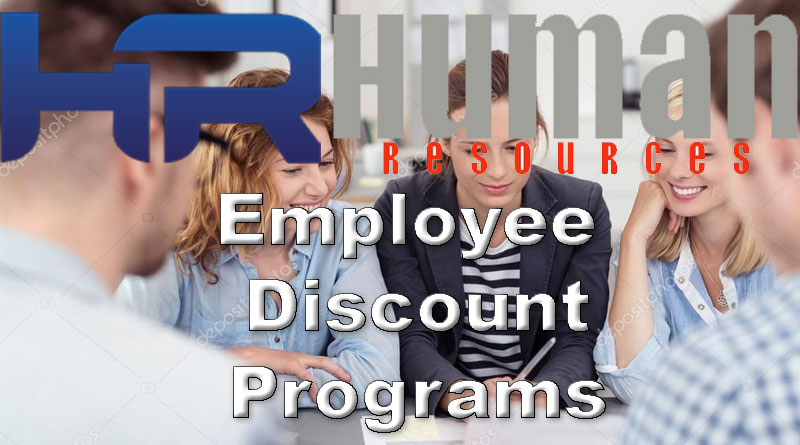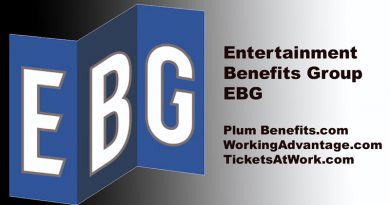Employee Discount Programs
Employee discount programs were borne from the idea that these kinds of benefits would improve employee morale and raise overall employee productivity, thereby being mutually beneficial. Therefore, providing additional perks to employees is considered an excellent way to provide value to the business for very little or no cost.
Employee Perk and Discount Programs For Corporations
It has become to de facto standard for U.S. businesses to offer basic benefits like 401k, health coverage, paid time-off, sick leave, and performance bonuses, but there remain other areas where additional programs can still move the needle north on employee happiness, often at little or no cost to the employer. One of these programs is the employee discount program, or employee perk program, which is becoming increasingly popular with employers and employees. Many employers also tie that program to an employee rewards program and/or their employee loyalty programs; while these both may seem like throwback ideologies, given increasing turnover rates, both programs have nonetheless proven to increase employee retention, if only by a few percent.
Corporate employees love to get discounts because of their place of work. Whether it’s a discount on a new computer or tickets to a show, the rationale is always the same – less money out-of-pocket for the individual and more loyalty to the employer. Employees always enjoy discounts because, let’s face it, who wants to spend more when they can spend less, especially if it is special pricing they cannot get by themselves? Vendors love these programs because it allows them to sell their product or service in a private environment, where the special pricing will not do any damage to their public pricing, revenue, brand or marketing. Employers love these services because they are an easy way to make employees feel more looked after, retaining employees for longer and increasing employees’ overall happiness. It’s a win-win-win for all, and the only challenge for HR departments is that there are so many options for employee discount programs to choose from. Most services are free, some are paid, but all have their pluses and minuses.
Employee Discount Programs Versus Daily Deal Websites
 Employee discount programs are usually a private “employees only” benefit. These are distinguished from public daily deal services such as Groupon, Living Social, Gilt, Goldstar or any of the other daily-deal websites, which this article does not discuss, as these are not employer-sponsored programs. The offers on daily-deal services should never eclipse those of employee perk and discount programs. The daily-deal websites are, however, a good bar to use to compare the value of an employee perk program. If an employee can get the same (or an even better) deal at the daily-deal website on an item, then the employee perk program service would have failed in its mission to deliver the very best pricing model. The whole idea behind employee pricing is that it is the very best pricing that can be arranged, and that employees could not get such a low price without the employer. Some employee perk programs will actually remove an offer if a comparable offer becomes available on a daily-deal website. Daily-deal websites are great for vendors to make a fast buck or launch a brand, but they are notorious for destroying a brand in the long term, something that the protected model of the “employees only” access will not do.
Employee discount programs are usually a private “employees only” benefit. These are distinguished from public daily deal services such as Groupon, Living Social, Gilt, Goldstar or any of the other daily-deal websites, which this article does not discuss, as these are not employer-sponsored programs. The offers on daily-deal services should never eclipse those of employee perk and discount programs. The daily-deal websites are, however, a good bar to use to compare the value of an employee perk program. If an employee can get the same (or an even better) deal at the daily-deal website on an item, then the employee perk program service would have failed in its mission to deliver the very best pricing model. The whole idea behind employee pricing is that it is the very best pricing that can be arranged, and that employees could not get such a low price without the employer. Some employee perk programs will actually remove an offer if a comparable offer becomes available on a daily-deal website. Daily-deal websites are great for vendors to make a fast buck or launch a brand, but they are notorious for destroying a brand in the long term, something that the protected model of the “employees only” access will not do.
Hitting The Sweet Spot In Employee Discount Programs
Organizations with little experience in selecting employee discount programs will often make the mistake of bringing in as many employee discounts as they can in anticipation of this being the best path to success, when in fact, the greatest success comes with a ‘less-is-more’ approach. Getting discounts to Macy’s and Papa John’s Pizza when employees don’t really shop or eat there will not be providing much of a service, and the employee discount program will quickly fall into a lack of participation; with hundreds of thousands of offers, the good stuff cannot be easily found. If the discounts can already be found in the public domain, then HR decision makers should steer clear of the service completely, because there is no value in using this service, and employees will start to feel disenfranchised. Sometimes, HR generalists are just looking to check a box on their list of annual objectives, and are not considering key questions, such as:
- What kind of discounts bring the most value to my employees?
- What solution will make sure employee engagement continues to be strong?
- What metrics can I put in place to monitor employee engagement?
- What is the maximum number of offers the employee discount program could offer, while not encouraging “shopping at work”?
- How often should we promote the service internally? What is the sweet spot for my organization’s culture?
- Should I integrate the solution into my Intranet site, or leave it outside on its separate service?
- How will I promote the service once it is established? Will the vendor attend my benefit fairs to encourage participation?
- What do I need to do to keep employee participation high?
- Will I integrate employee rewards into this system?
 Ideally, HR professionals should select only a handful of offers that make sense to their employees. Some should be local to each main office, and some should be national. Some low hanging local fruit include local gyms, dry cleaners, parking, hotel and food choices. Local sports team discount offers also make sense, especially if it is a well-known brand. The national offers can include cell phone discounts, movie theatre discounts, Disneyland, Disney World and Broadway show discounts. The offers to avoid are national retail brands, car rentals, computer software, white goods, brown goods and car sales because better discounts can already be found on daily-deal websites for these services. For example, Costco.com has by far the best car rental rates available anywhere, and any employee discount program trying to compete with those numbers will pale in comparison. Industry research has found that just 6 well-chosen local offers, and 10 well-chosen national offers, satisfy 97% of employees, so offering tons more offers than that number will only garner the satisfaction of the other 3% of employees. It will also make the good offers impossible to find from all the options, thereby reducing the value of the initial offers.
Ideally, HR professionals should select only a handful of offers that make sense to their employees. Some should be local to each main office, and some should be national. Some low hanging local fruit include local gyms, dry cleaners, parking, hotel and food choices. Local sports team discount offers also make sense, especially if it is a well-known brand. The national offers can include cell phone discounts, movie theatre discounts, Disneyland, Disney World and Broadway show discounts. The offers to avoid are national retail brands, car rentals, computer software, white goods, brown goods and car sales because better discounts can already be found on daily-deal websites for these services. For example, Costco.com has by far the best car rental rates available anywhere, and any employee discount program trying to compete with those numbers will pale in comparison. Industry research has found that just 6 well-chosen local offers, and 10 well-chosen national offers, satisfy 97% of employees, so offering tons more offers than that number will only garner the satisfaction of the other 3% of employees. It will also make the good offers impossible to find from all the options, thereby reducing the value of the initial offers.
Paid Versus Free Employee Discount Programs
Free employee discount programs and services are great for the bottom line, as they do not cost the organization anything, but the downsides are that the client often cannot dictate the content of the product or service lines that appear on the free service. They may also have to use multiple free services to provide a good basis of offers for their employees, because no vendor offers every service they will need. There can be a lot of chaff offers with free services, which do not connect with the employees at all, and a poor choice of free service means that it could go completely unused by employees. Free services also do not usually allow the organization to put up their own offers. Paid services are great for customization, where the organization can brand the service, use an API to deliver content to their own Intranet page, put up their own offers, decide what things should appear and integrate the service into their corporate culture. One problem that exists for the paid service is that if it does not offer a certain product or service, while they can put pressure on the employee perks program service provider (EPPSP) to offer it, if they are unable to do so, then they may well have to end up using a free service to backfill in order to provide comprehensive service to their employees. It’s down to the organization to ask themselves: if they pay for the service, will it provide everything the employees will need? Most often, it does not cover all bases because they are limiting their options to just one provider, and no provider does it all. The most common solution is to select either one paid service and one free service, or two free services.
Access and Security to the Programs
Employee access to the EPPSP services can sometimes pose a problem. The security on some employee perk services are so weak that their offers leak out into the general public domain. This results in damaging the vendor’s brand and pricing model, as well as diluting the value to the employer and  employee. Other EPPSP vendors lock down their environment too much, with very secure sites that can make it difficult for users to access if they are offsite. The latter services often have the best offers, but employees often must login to a work computer or have some other security bar. Some paid services require that the organization send a list of all their active employees and their email addresses once per week to the EPPSP, in order for them to grant access. That kind of data is very sensitive and many organizations balk at the idea of passing that data to an uncontrolled third party, regardless of what contracts or security controls are in place.
employee. Other EPPSP vendors lock down their environment too much, with very secure sites that can make it difficult for users to access if they are offsite. The latter services often have the best offers, but employees often must login to a work computer or have some other security bar. Some paid services require that the organization send a list of all their active employees and their email addresses once per week to the EPPSP, in order for them to grant access. That kind of data is very sensitive and many organizations balk at the idea of passing that data to an uncontrolled third party, regardless of what contracts or security controls are in place.
Further Reading:
Employee Perk Program Comparisons
Employee Discount Program Case Studies



